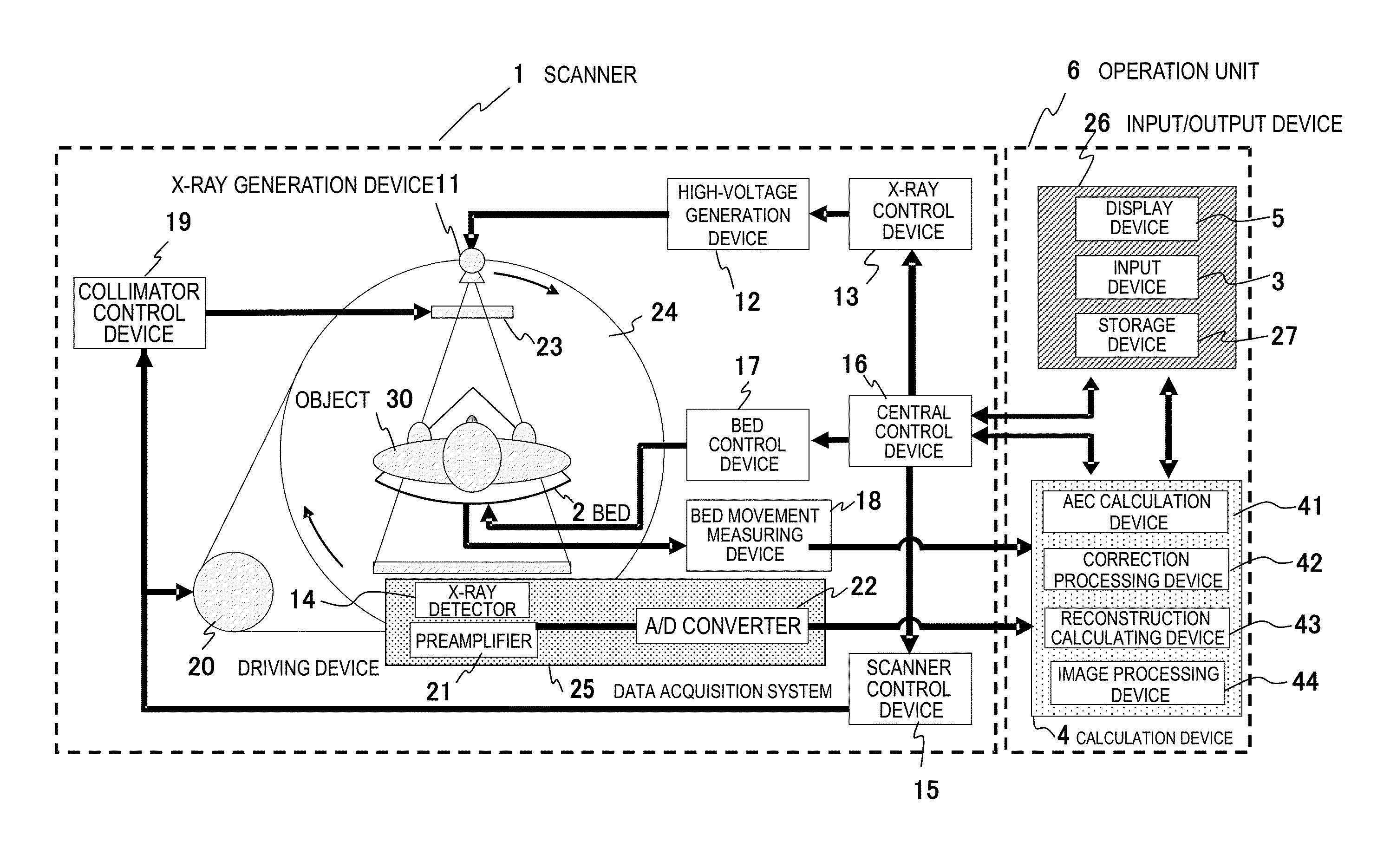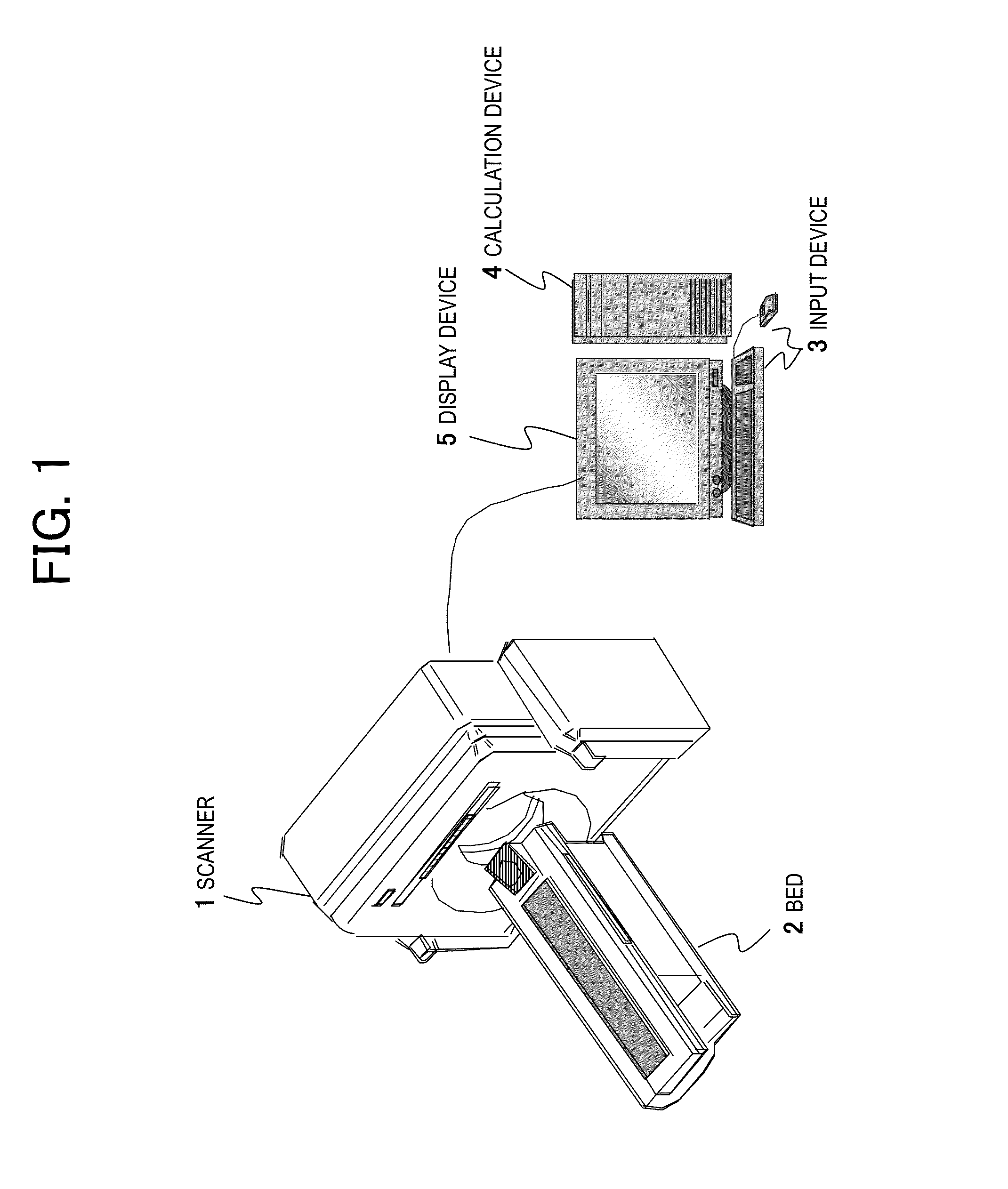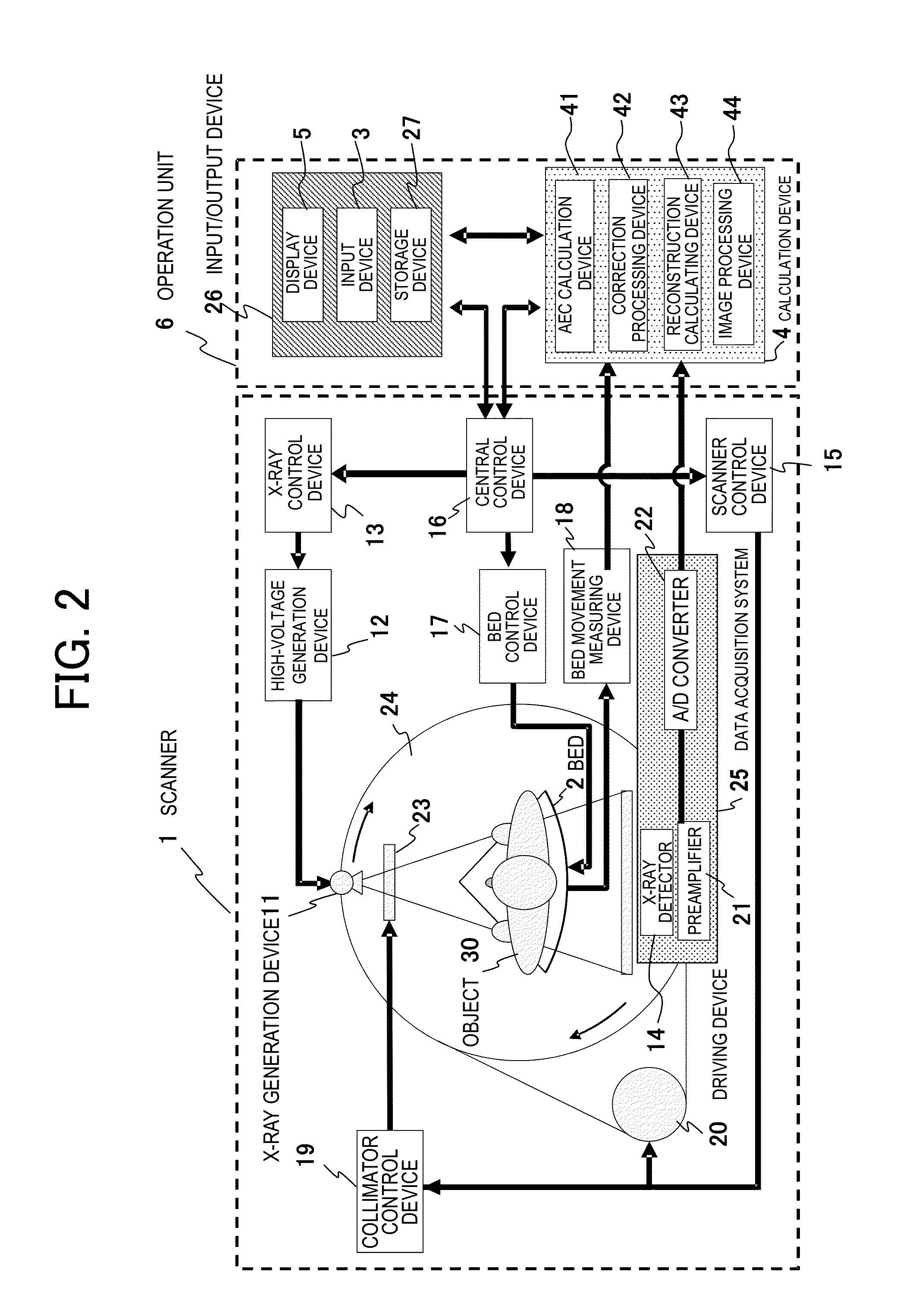X-ray CT apparatus and correction processing device
a correction processing device and x-ray ct technology, applied in tomography, applications, instruments, etc., can solve problems such as the problem of the influence of x-rays on the human body, and achieve the effect of reducing system nois
- Summary
- Abstract
- Description
- Claims
- Application Information
AI Technical Summary
Benefits of technology
Problems solved by technology
Method used
Image
Examples
embodiment 1
[0040]The correction processing device 42 performs, on an output signal from the data acquisition system 25, a process of maintaining a local mean value of output signals of a plurality of predetermined detection elements centering on a focused detection element and of reducing a variance corresponding to a system noise amount included in the output signals of the plurality of predetermined detection elements.
[0041]FIG. 3 is a block diagram illustrating a specific configuration of the correction processing device 42, and FIG. 4 is a flowchart illustrating an operation of the correction processing device 42. As illustrated in FIG. 3, the correction processing device 42 is configured to include a preprocessor 131, a noise reduction processor 132, a positive number converter 133, a correction processor 134, an evaluation function parameter setter 136, and a threshold value setter 135. The above-described constituent elements may be constituted of hardware obtained through combination o...
embodiment 2
[0088]In Embodiment 2, the correction processing device 42 performs a process for achieving a desired noise reduction effect more accurately even in a case where an average of measurement data of detection elements j around a focused detection element i is considerably small.
[0089]A configuration of the correction processing device 42 of Embodiment 2 is the same as in FIG. 3 of Embodiment 1, and a flow of a process performed by the correction processing device 42 is the same as illustrated in FIG. 4. However, in Embodiment 2, Equation (9) is used instead of Equation (1) in step 402 of FIG. 4. Equation (9) relates to a PWLS function Q(s).
[Equation9]Q(s)=∑i=1If(Ti)(di-si)2+∑i=1Iαi∑j∈Niwij(si-sj)2(9)
[0090]In Equation (9), symbols common to Equation (1) indicate the same parameters as in Embodiment 1. In Equation (9), αi, which is a penalty coefficient, is not equivalent for all data and is defined for each detection element i, and αi is set to become greater as measurement data di has ...
embodiment 3
[0093]In a case where an X-ray absorption coefficient of an object does not depend on energy of X-rays, a relationship between an average value and a variance of data can be represented as a straight line as in the comparative example 1 in FIG. 8. In contrast, in a case where the X-ray absorption coefficient considerably depends on the energy, a relationship between both of the two is not represented as a straight line (called a beam hardening effect). Therefore, in Embodiment 3, the correction processing device 42 performs a process for realizing a desired noise reduction effect more accurately by taking into consideration an influence of the beam hardening effect of X-rays detected by the X-ray detector 14.
[0094]A configuration of the correction processing device 42 of Embodiment 3 is the same as in FIG. 3 of Embodiment 1, and a flow of a process performed by the correction processing device 42 is the same as illustrated in FIG. 4. However, in Embodiment 3, Equation (11) is used i...
PUM
 Login to View More
Login to View More Abstract
Description
Claims
Application Information
 Login to View More
Login to View More - R&D
- Intellectual Property
- Life Sciences
- Materials
- Tech Scout
- Unparalleled Data Quality
- Higher Quality Content
- 60% Fewer Hallucinations
Browse by: Latest US Patents, China's latest patents, Technical Efficacy Thesaurus, Application Domain, Technology Topic, Popular Technical Reports.
© 2025 PatSnap. All rights reserved.Legal|Privacy policy|Modern Slavery Act Transparency Statement|Sitemap|About US| Contact US: help@patsnap.com



